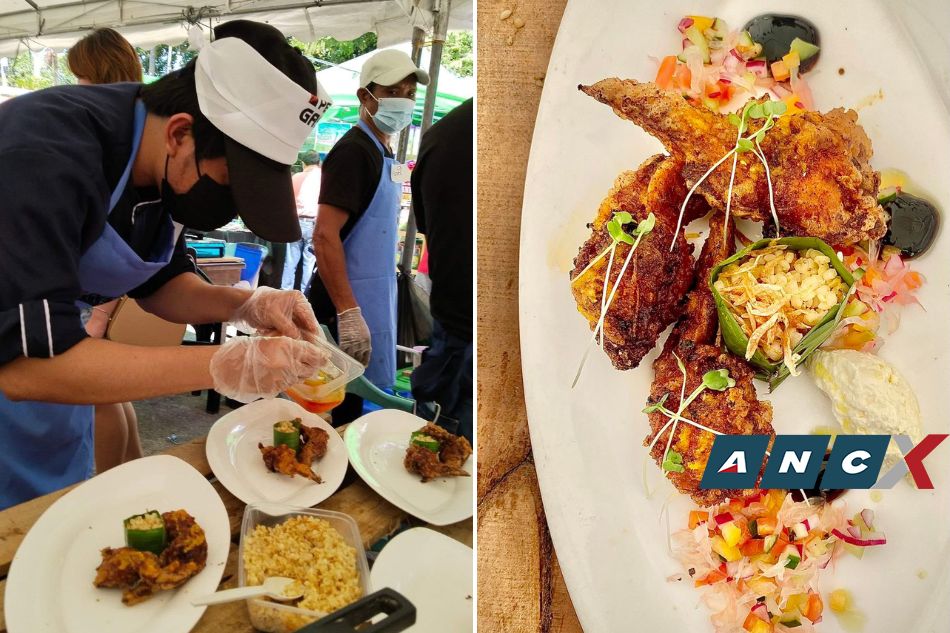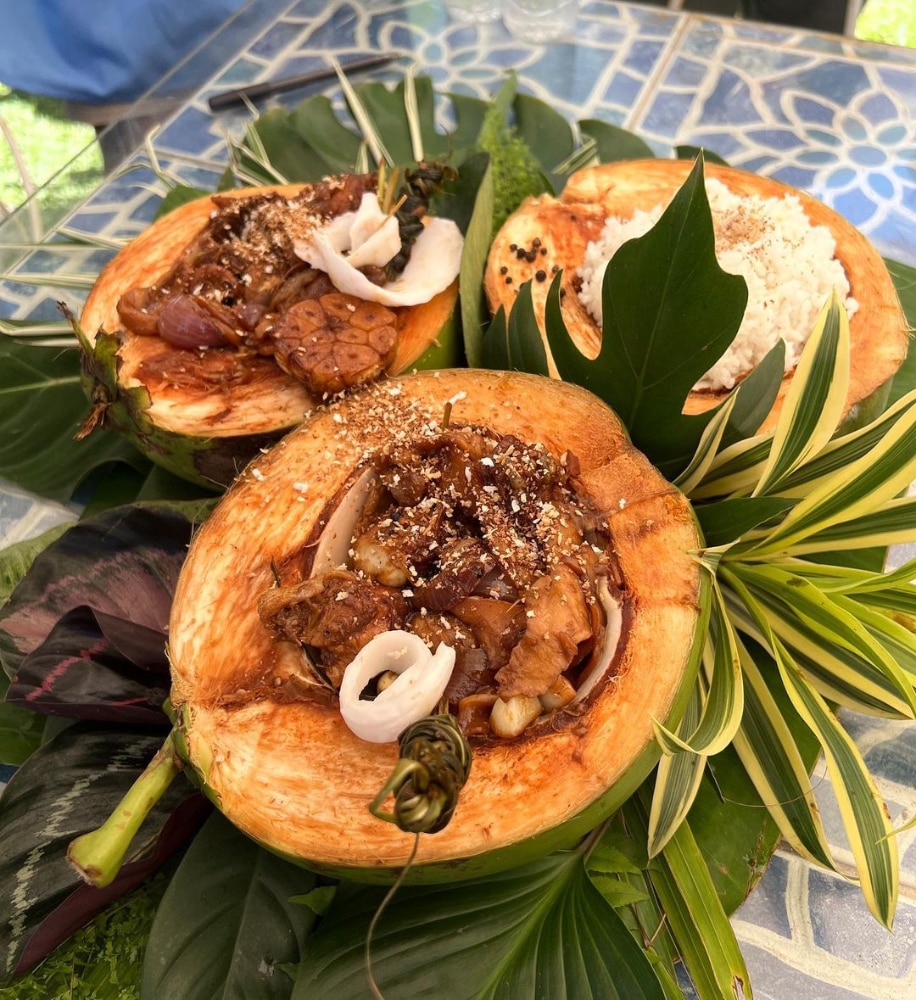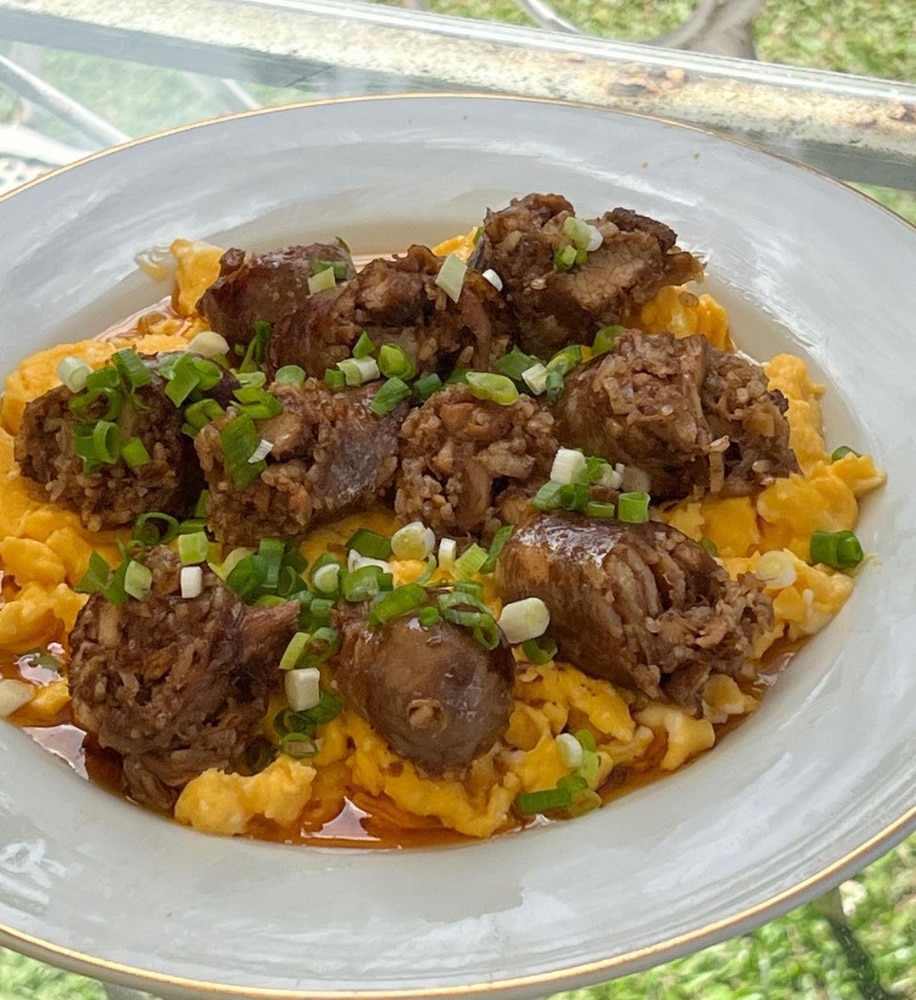On the occasion of the 25th year of the Adobo Festival in Negros Occidental, innovative iterations of adobo–the top Filipino stew according to Taste Atlas—were showcased. “There was one made out of rabbit, duck, and clams. There’s also one presented like a chorizo, which I find interesting,” the festival’s project director, Reena Gamboa, tells ANCX.
Lyn Gamboa, Reena’s mother, started out the Adobo Festival, when she was president of the Negros Cultural Foundation Inc. (NCFI). It was conceptualized as a fundraiser for the Balay Negrense—the first museum to be established in the province of Negros Occidental.
This year’s festival was held last November 5 to 6 at Casa A. Camboa, a bed and breakfast place in Rizal St., Silay City, which is run by Reena herself, a farmer and slow food advocate.
The dish that bested the 11 other contenders was “Adobo nga Uhong sa Manok nga may Bisaya nga Ensalada kag Kalkag Kalo-Kalo” (adobo stuffed chicken wings with Filipino salsa and dried alamang fried rice) by 25-year-old Paul Jaerylle Mugar of Pahanocoy, Bacolod City.
Mugar—a graduate of Bachelor of Science in Hotel and restaurant management at John B. Lacson Colleges Foundation and who once worked as a chief cook in a cargo ship—stuffed the boneless organic chicken wings with farm-raised oyster mushrooms and young coconut meat. He then deep-fried the chicken to achieve the crunchy texture and glazed it with tanglad infused adobo sauce. To add a hint of creaminess, he topped it with a locally sourced ricotta cheese from Casa del Formaggio.
Instead of white rice, the young cook served his chicken dish with Kanlaon adlai rice, sautéed with aromatics. “It’s a healthier alternative,” the Bacolod-born cook offers. “We also wanted to introduce the kalkag (dried baby shrimps) to our kalo-kalo (fried rice), remembering the hardworking fishermen of our province.” To add crispness and to showcase fresh produce of the province, he also placed ensalada on the side.
Most of what the contestants presented were recipes they grew up with, but with a modern twist, observes Gamboa. “This just goes to show that adobo is really a staple dish among Filipino families because every home has its own adobo recipe. And you can’t argue if it’s masarap or not because their mama made it,” she says. But Reena also noticed many young cooks and chefs no longer stick to classic traditions.
Gamboa says Mugar’s dish stood out because the judges thought it was the most original in terms of recipe. The competition was judged by Filipino artist, restaurateur and food writer Claude Tayag, chef and writer from Manila Datu Shariff Pendatun, architect, designer and Prado Farms owner Reimon Gutierrez, and Negrense chefs Gabriel Melocoton and Joeri Arro.
The second placer in the adobo cook-off was Emmanuel Caldera’s Adobo sa Butong ni Gong-Gong, and the third prize winner was JM Villa’s Chodo-Boudain (boudain sausage stuffed with his special chodobo recipe).
Aside from the cooking competition, the two-day Adobo Festival event was also highlighted by a writing competition which was judged by book author Neni Sta. Romana Cruz, writer Maya Besa Roxas, and journalist Howie Severino. The adobo memories of Rae Macapagal from Baguio won the writing tilt.
A booth was set up by the Slow Food community, showcasing the different kinds of adobo that were served last September at the Terra Madre Salona del Gusto—an international gastronomy exhibition, held every two years in Turin, Italy. There were also cooking demonstrations by some of the chefs and a learning session on baybayin by Severino.




